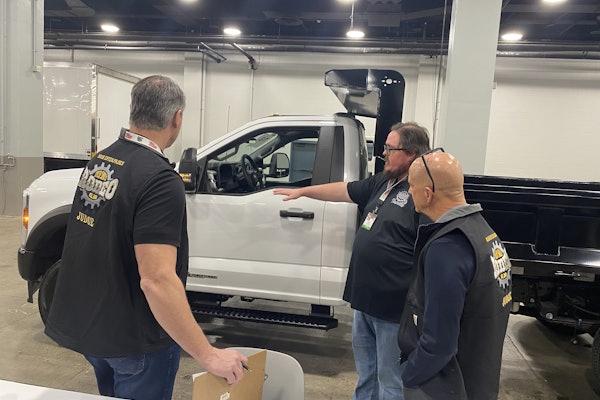The good news is that 95 percent of the time, our economy grows. According to Martin Regalia, vice president and chief economist of the U.S. Chamber of Commerce, over the last 100 quarters, there have been only five in which there was no growth in real GDP.
Unfortunately, that probably will not be true in the short-term and it is unlikely that we will get by without a recession.
There are some significant weak spots in the economy, most notable housing starts and problems caused by sub-prime mortgage issues.
But Regalia is optimistic saying, “There is a light at the end of the tunnel that is not attached to an on-coming train.”
Regalia spoke at the recent Heavy Duty Dialogue ’08 held in Las Vegas on Monday.
The business conference, sponsored by the Heavy Duty Manufacturers Association, focused on the global commercial vehicle business and the forecasts that will shape the future for the industry.
He spoke about a number of issues ranging from the effects consumption rates have on the economy, the potential tax stimulus package and the credit market.
According to Regalia, consumption drives much of the economy and, “as long as we have consumption we will usually be all right.”
The problem in the housing market is not news to anyone and Regalia believes it will be another 10 to 12 months before the housing backlog from repossessions from the sub-prime housing market is cleared up.
On the bright side, commercial construction is good in part because there are resources not being used elsewhere that are available for commercial construction. There will be some slowing down in this area, however, as manufacturers are reluctant to make investments in warehousing and are relying on just-in-time and lean inventory practices.
More specifically to trucking, Regalia says he is seeing some plateauing but no definitive trends. “Shipping is down, but has not fallen off a cliff,” he says.
On the global scene, while the dollar is weak, exports are strong. We make good products here and people in other countries recognize that and want them, according to Regalia.
For the long term, he sees the continued weakening of the dollar, but also sees foreign investment in the U.S. as a constant. “The U.S. still is a good place to invest, but not at yesterday’s exchange rate.”
Regalia advises business owners to keep their eyes on the initial claims for unemployment, which are available every Thursday. “We are at about the 328,000 level. If that goes up to 350,000 we will not make it through this cycle without a recession. If it goes above 315,000, that is an indication that the industry is out of the worse part of things.”
Another key indicator is the core inflation rate. The Feds look at this to make decisions about interest rates. “If it is above 2.5 percent the Feds are skittish about cutting interest rates,” he explains. Although the number currently is higher than that, Regalia thinks interest rates will be cut 50 basis points.
Oil and energy prices will rise and will stay high in part as a result of the industrialization of China. “They are soaking up raw material to produce goods for export.”
While the budget deficit has fallen, Regalia has some concerns about what will happen following the elections. Given that today there is a balance between the political parties in the White House and the Congress, which has curbed spending and as a result caused the deficit to come down, if as many pundits predict, both sides of government will be controlled by one party following the elections, we could see a resurgence of spending and a rising deficit.
The bottom line? Near term Regalia sees slow growth of 1 percent to 1.5 percent. Long term, there are issues looming including problems with social security, lack of investment in infrastructure, and others that if combined could form what he calls a Perfect Storm that could lead to an economic downturn that could be worse than the recession of the 1980s. But only if a number of factors come together at the same time and Regalia, among others, is hoping that does not happen.







